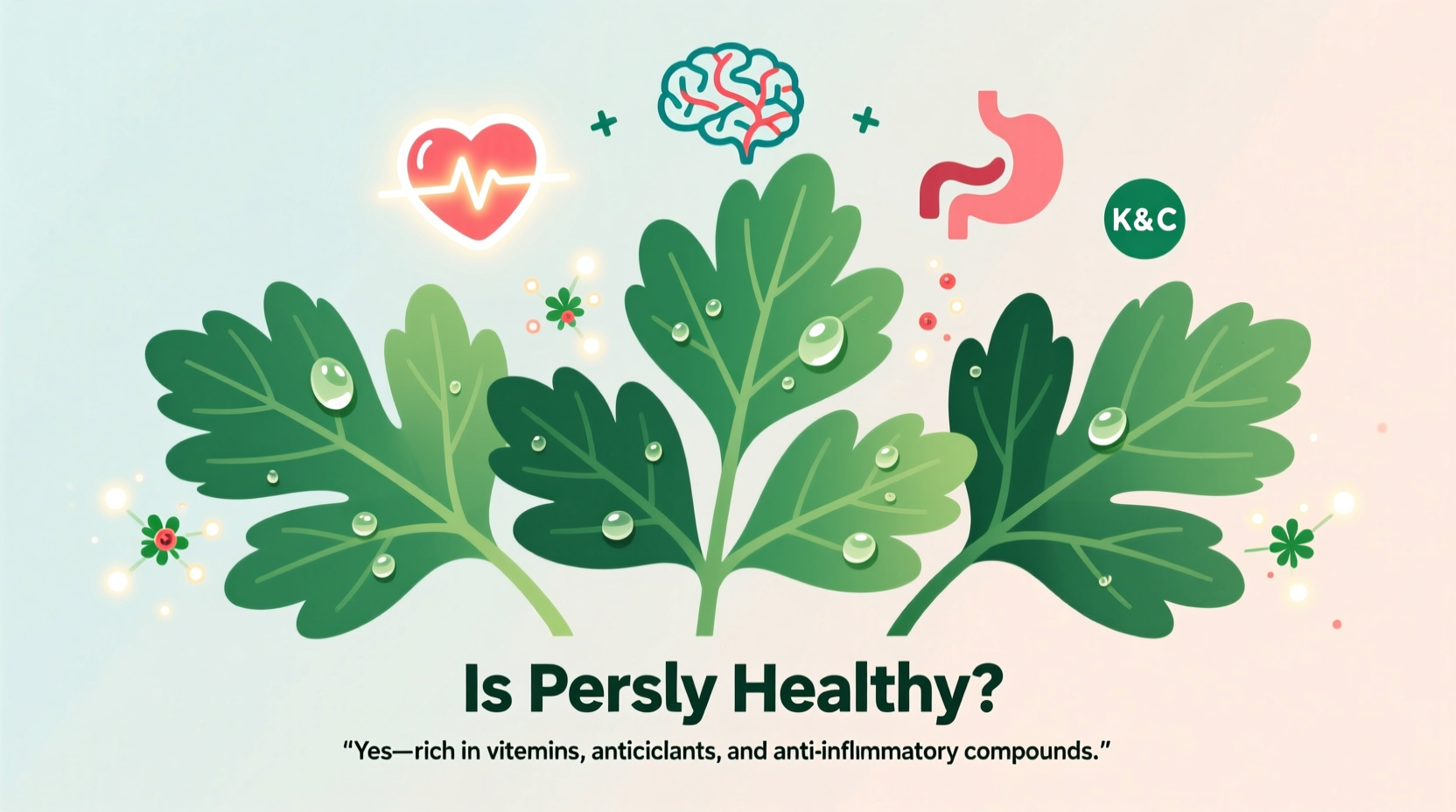Yes, parsley is exceptionally healthy. This vibrant herb delivers impressive nutritional benefits including high levels of vitamins K, C, and A, powerful antioxidants, and anti-inflammatory compounds that support heart health, bone strength, and immune function. Just one-quarter cup provides over 100% of your daily vitamin K needs and significant amounts of essential nutrients with minimal calories.
When you reach for that bunch of fresh parsley at the grocery store, you're grabbing one of nature's most potent nutritional powerhouses. This humble herb, often relegated to mere garnish status, actually packs a remarkable nutritional punch that can significantly boost your daily wellness routine. Whether you're sprinkling it on soups, blending it into smoothies, or using it as the star ingredient in tabbouleh, understanding parsley's true health value transforms how you incorporate it into your meals.
What Makes Parsley a Nutritional Powerhouse
Parsley isn't just green decoration—it's a concentrated source of essential nutrients that outperforms many fruits and vegetables in specific nutritional categories. Unlike many herbs that primarily offer flavor, parsley delivers substantial health benefits backed by nutritional science. The key lies in its impressive vitamin and mineral profile, particularly when consumed fresh.
| Nutrient | Amount per 100g | Daily Value % | Key Health Benefits |
|---|---|---|---|
| Vitamin K | 1,640 mcg | 1,367% | Bone health, blood clotting, cardiovascular protection |
| Vitamin C | 133 mg | 148% | Immune function, collagen production, antioxidant protection |
| Vitamin A | 4,210 IU | 84% | Vision health, immune function, skin integrity |
| Folate | 152 mcg | 38% | Cell division, DNA synthesis, red blood cell formation |
| Iron | 6.2 mg | 34% | Oxygen transport, energy metabolism |
Data source: USDA FoodData Central
Science-Backed Health Benefits of Parsley
Cardiovascular Protection Through Multiple Pathways
Parsley's heart-healthy properties operate through several mechanisms. The herb contains apigenin, a flavonoid shown in National Institutes of Health research to reduce inflammation in blood vessels and potentially lower blood pressure. Additionally, parsley's high vitamin K content helps prevent calcium buildup in arteries—a process known as vascular calcification—which is a significant risk factor for cardiovascular disease.
Bone Density Support Beyond Calcium
While calcium gets most of the attention for bone health, vitamin K plays an equally crucial role. Parsley contains exceptionally high levels of vitamin K1 (phylloquinone), which activates osteocalcin—a protein essential for binding calcium to the bone matrix. According to research published in the Journal of Nutrition Reviews, adequate vitamin K intake correlates with reduced fracture risk and improved bone mineral density, particularly in postmenopausal women.
Antioxidant Powerhouse Against Cellular Damage
Parsley ranks among the most antioxidant-rich herbs, containing not only vitamins C and A but also unique compounds like luteolin and myricetin. These antioxidants work synergistically to neutralize free radicals throughout the body. A comprehensive analysis in the Journal of Food Composition and Analysis found that fresh parsley contains significantly higher antioxidant capacity than many commonly consumed vegetables, including celery and lettuce.

Practical Ways to Maximize Parsley's Health Benefits
Fresh vs. Dried: The Nutritional Difference
When it comes to nutritional value, fresh parsley dramatically outperforms its dried counterpart. The drying process significantly reduces vitamin C content and many volatile compounds responsible for parsley's health benefits. For maximum nutritional impact:
- Use fresh parsley whenever possible—it contains up to 10 times more vitamin C than dried
- Store parsley properly by trimming stems and keeping in water like flowers
- Add parsley at the end of cooking to preserve heat-sensitive nutrients
- Consider freezing in olive oil for longer storage while maintaining nutritional value
Daily Consumption Guidelines
While parsley is incredibly healthy, moderation remains important. Most nutrition experts recommend:
- 1/4 to 1/2 cup chopped fresh parsley daily for general health benefits
- Up to 1 cup daily when specifically targeting certain health goals
- Limit to 1/4 cup daily if you have kidney issues or are on blood thinners
Who Should Moderate Parsley Consumption
Despite its numerous benefits, certain individuals should exercise caution with parsley:
People on blood thinners: Parsley's exceptionally high vitamin K content can interfere with medications like warfarin. Those taking these medications should maintain consistent daily intake rather than fluctuating amounts.
Individuals with kidney problems: Parsley contains oxalates and potassium, which may need monitoring in those with compromised kidney function. The National Kidney Foundation recommends consulting with a renal dietitian about appropriate herb consumption.
Pregnant women: While culinary amounts are safe, extremely high consumption of parsley (beyond typical food use) may stimulate uterine contractions according to research in Journal of Ethnopharmacology.
Simple Ways to Incorporate More Parsley Into Your Diet
You don't need to be a professional chef to harness parsley's health benefits. Try these practical approaches:
- The 10% Rule: Add at least 10% parsley by volume to any green salad
- Smoothie Boost: Blend 1/4 cup fresh parsley into fruit smoothies (the fruit masks any strong herb flavor)
- Herb-Infused Water: Add parsley sprigs to your water bottle for subtle flavor and benefits
- Finishing Touch: Sprinkle generously on soups, stews, and roasted vegetables just before serving
- Parsley Pesto: Substitute half the basil in traditional pesto with parsley for added nutritional value
Historical Timeline of Parsley Research
Parsley's journey from ancient medicinal herb to scientifically validated superfood spans centuries:
- Ancient Greece (500 BCE): Used primarily as a medicinal herb for treating digestive issues and as a diuretic
- Middle Ages (500-1500 CE): Recognized for wound healing properties and used to prevent epidemics
- 1930s: Vitamin K isolated and identified, explaining parsley's historical use in wound healing
- 1980s: Antioxidant properties begin receiving scientific attention
- 2000s: Research identifies specific flavonoids like apigenin and their anti-inflammatory effects
- Present Day: Ongoing studies examining parsley's potential role in cancer prevention and metabolic health
This evolution from folk remedy to evidence-based health food demonstrates how traditional knowledge often precedes scientific validation—a pattern seen with many medicinal plants.











 浙公网安备
33010002000092号
浙公网安备
33010002000092号 浙B2-20120091-4
浙B2-20120091-4